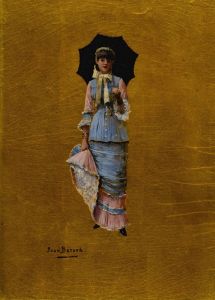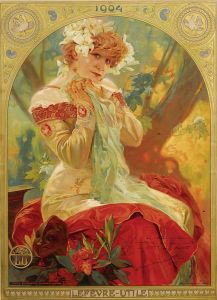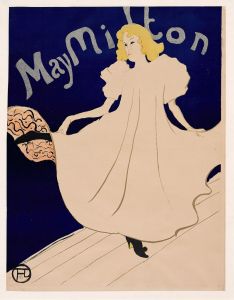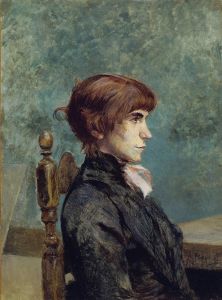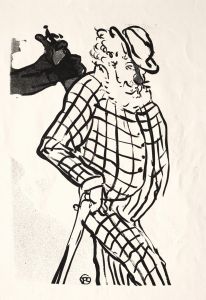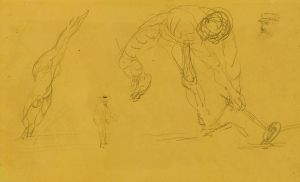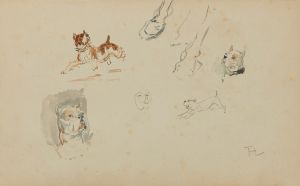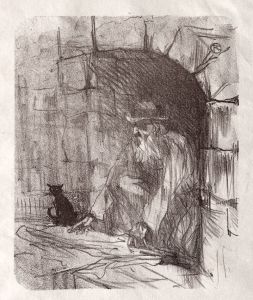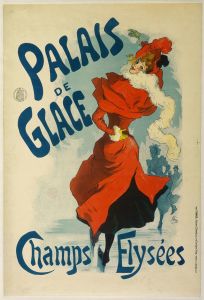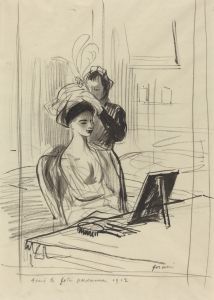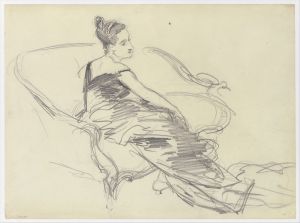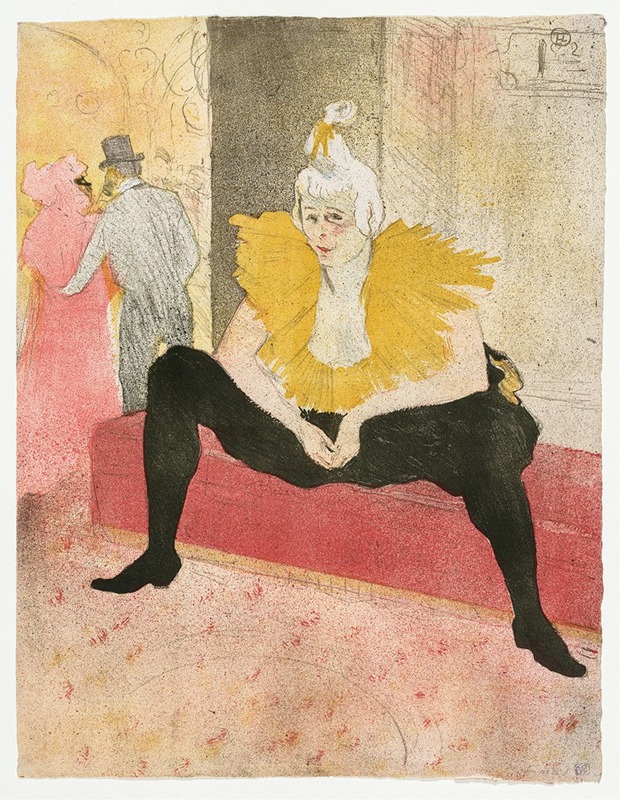
Elles, The Seated Clown, Mlle Cha-u-Ka-o
A hand-painted replica of Henri de Toulouse-Lautrec’s masterpiece Elles, The Seated Clown, Mlle Cha-u-Ka-o, meticulously crafted by professional artists to capture the true essence of the original. Each piece is created with museum-quality canvas and rare mineral pigments, carefully painted by experienced artists with delicate brushstrokes and rich, layered colors to perfectly recreate the texture of the original artwork. Unlike machine-printed reproductions, this hand-painted version brings the painting to life, infused with the artist’s emotions and skill in every stroke. Whether for personal collection or home decoration, it instantly elevates the artistic atmosphere of any space.
Henri de Toulouse-Lautrec, a prominent French painter and illustrator, is renowned for his depictions of Parisian nightlife in the late 19th century. One of his notable works is "Elles, The Seated Clown, Mlle Cha-u-Ka-o," which is part of a series that explores the lives of performers and entertainers in the vibrant Montmartre district of Paris.
"Elles" is a series of paintings and lithographs created by Toulouse-Lautrec between 1896 and 1897. This series focuses on the intimate and candid moments of women, particularly those involved in the entertainment industry, such as dancers, singers, and clowns. "The Seated Clown, Mlle Cha-u-Ka-o" is a piece within this series that captures the essence of a female clown, a subject that fascinated Toulouse-Lautrec due to its blend of performance and personal identity.
Mlle Cha-u-Ka-o, the subject of this painting, was a well-known performer in the Parisian cabaret scene. Her stage name reflects the playful and exotic personas that entertainers often adopted during this period. Toulouse-Lautrec's portrayal of Mlle Cha-u-Ka-o is both empathetic and revealing, offering a glimpse into the life of a performer beyond the stage. The painting depicts her in a moment of repose, seated and seemingly lost in thought, which contrasts with the lively and exaggerated persona she would present to her audience.
Toulouse-Lautrec's style is characterized by his use of bold lines and vibrant colors, which are evident in "The Seated Clown, Mlle Cha-u-Ka-o." His technique often involved the use of lithography, a printmaking process that allowed for the production of multiple copies of his works. This method was particularly effective in capturing the dynamic and ephemeral nature of the subjects he portrayed. In this piece, the use of color and line work highlights the contrast between the performer's costume and her contemplative expression, emphasizing the duality of her public and private personas.
The "Elles" series, including "The Seated Clown, Mlle Cha-u-Ka-o," is significant in Toulouse-Lautrec's oeuvre as it reflects his deep interest in the lives of women who existed on the fringes of society. His works provide a nuanced perspective on the complexities of their lives, challenging the traditional depictions of women in art at the time. By focusing on moments of vulnerability and introspection, Toulouse-Lautrec humanizes his subjects, offering viewers a more intimate understanding of their experiences.
Henri de Toulouse-Lautrec's contribution to art extends beyond his technical skill; his works serve as a historical record of the cultural and social dynamics of Paris during the Belle Époque. "The Seated Clown, Mlle Cha-u-Ka-o" exemplifies his ability to capture the essence of his subjects with empathy and insight, making it a valuable piece within his body of work. Through his art, Toulouse-Lautrec invites viewers to look beyond the surface and consider the stories and emotions of those who lived and performed in the vibrant world of Montmartre.





